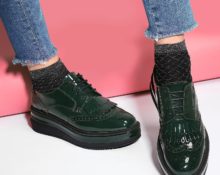
Mountaineering is an activity that requires a lot of equipment. It is necessary not only to choose it correctly, but also to have knowledge of how to use it. Mountaineering can take you to some of the most incredible places on Earth. You can quickly find yourself in a dangerous situation.
One of the most important pieces of equipment you buy for mountaineering is mountain boots. This is the foundation of your equipment and what you will rely on with every step. Choosing the right mountain boots can be a lengthy process. But with a little research and thought, you'll find a pair you can trust.
Key points to consider when purchasing climbing boots:
- What boot rating do you need: The B rating is a generally accepted indicator of a boot's suitability for a variety of winter mountain treks. They range from B0 (not for use with crutches) to B3. The latter are the toughest high-altitude boots with crutch scars on the heel and toe.
- What style of boot do you need: There are different styles of climbing boots that offer varying levels of insulation and protection. It all depends on the type of conditions in which you expect to climb.
- Personal aspirations, abilities and limitations that may affect your plans.
- Advances in technology that require you to reconsider your expectations regarding boot ratings and boot styles.
Boots B0

The B0 boots feature increased flexibility in the sole and upper. This makes them comfortable right out of the box. They are great for walking in the hills below the snow line. Even with modern flex splints, the shackles will not flex as much as these boots. This disparity in flexibility puts unnecessary pressure on the fastening. It can cause the staple to break out with potentially catastrophic consequences.
You may also find that the staple straps dig into the softer fabrics of the upper. This leads to significant discomfort. Therefore, for comfort and safety, boots with a B0 rating should be avoided. If these are the boots you want, use staples.
Boots B1
Class B1 boots are universal all-season walking boots. They are ruggedly built for long mountain days and mountain climbing. They are suitable for those who want to engage in less technical walking on winter slopes. The midsole is hard. And the upper part can be leather or fabric. It is often supported by a wide rubber welt or synthetic leather reinforcements. Only combine with C1 clasps. They provide the best flexion. The B1/C1 combination is suitable for many winter walks and light snow.
Boots B2
The best choice for those who regularly hit the winter slopes and spend long days in snowy conditions. Both the footbed and upper will be rigid and supportive. They are flexible enough to withstand regular walking. The thicker top provides a little more warmth. The B2 boot has a heel tab to accommodate the C2 shackle for the most secure fit and versatility. Suitable for winter climbers, both beginners and experienced.
Boots B3
Designed for full mountaineering, mixed and ice ascents. The B3 boots have the stiffest sole and upper. This design provides strong lateral and medial support for the forefoot. They are suitable for traverses on steep terrain. This category includes high-altitude double boots, as well as lighter models for technical mountaineering. Welded seams at the heel and toe allow for the installation of C3 staples.
Technology development
The B/C system is still the simplest way to think about crutch compatibility. But the reality is that many of the newer B1 and B2 boots are a bit more flexible.
The best B2 mountain boots on the market still have a heel strap. But they flex like old school B1 boots. And the new B1 boots on the market flex like the stiff B0 boots. This reflects the fact that some staples now come with very flexible center bars. Consequently, they bend more easily when walking. The new lightweight B2 boots are more nimble when walking and scrambling, and again you can get by with the C2/C1 boots as long as the center shaft is flexible enough.


 0
0





